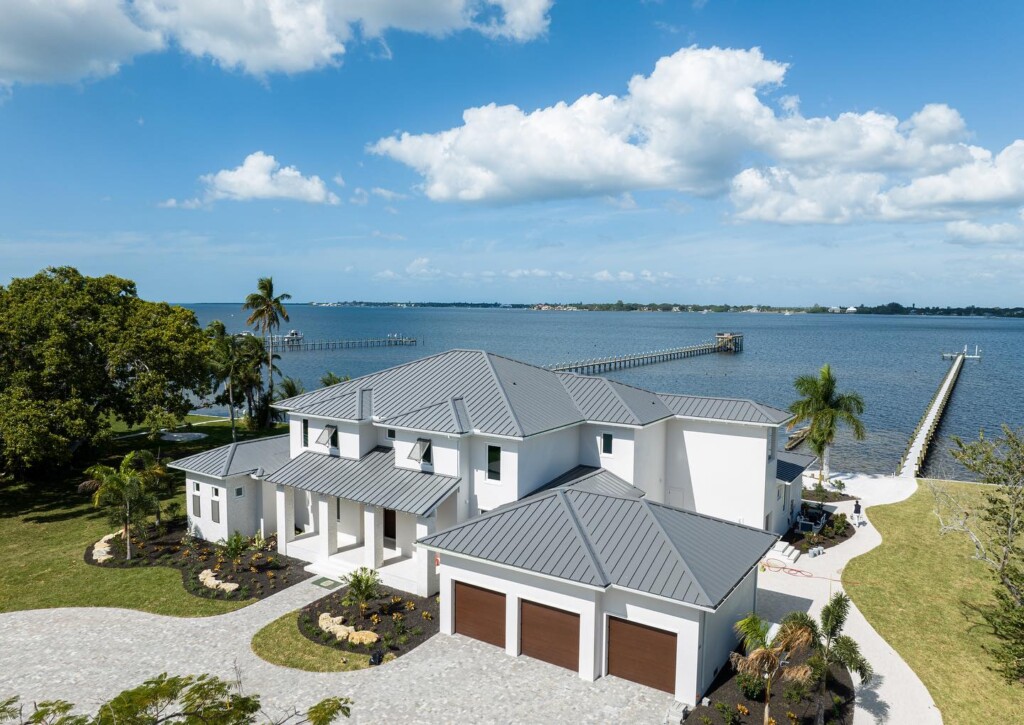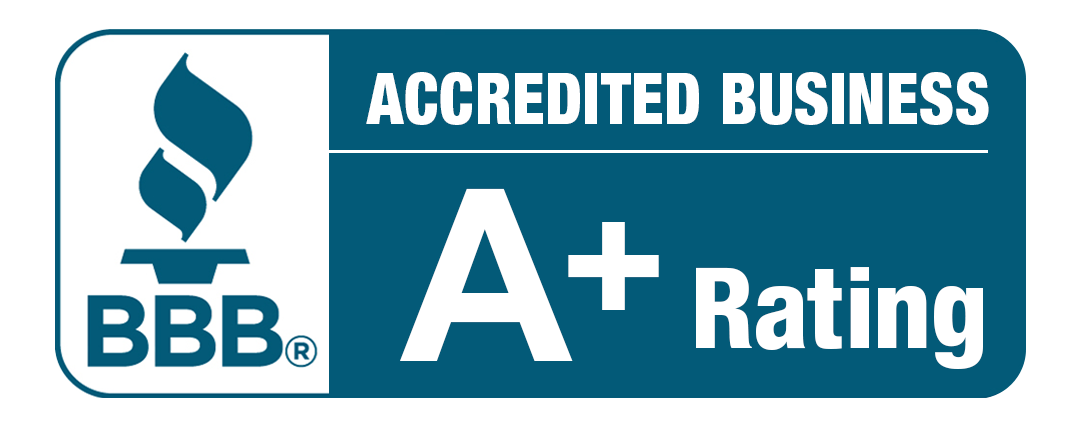Life on the Florida Gulf Coast has made it necessary to address hurricanes and floods when building new custom homes. Over the years, the state’s approach to homebuilding and construction has evolved in response to these recurring challenges. This article details a brief history about how local hurricanes and floods have historically influenced the building of more resilient homes in Florida.

Influence of Climate on Homebuilding in Florida
In Florida’s early history, homes were built with relatively simple and inexpensive materials. Many homes, particularly in coastal regions, were constructed using wood, which was abundant but vulnerable to the high winds and floodwaters that come with hurricanes.
The 1926 Miami Hurricane caused widespread destruction that solidified the need for homes in coastal and flood-prone areas to be built to withstand both high winds and rising waters. However, it wasn’t until after Hurricane Andrew in 1992 that Florida implemented some of the most stringent building codes in the nation. The destruction caused by Andrew revealed the vulnerabilities in Florida’s homebuilding practices, leading to a complete overhaul of construction regulations and the construction of more resilient homes.
Building Resilient Homes to Protect Against the Elements
Since Hurricane Andrew, Florida has been at the forefront of incorporating stronger, more resilient building codes that reflect the lessons learned from past events. These codes are designed to minimize the damage caused by hurricanes, protect lives, and reduce the economic impact of storms.
- Stronger Wind-Resistant Design: Florida’s updated building codes are heavily focused on wind resistance. Homes are designed with structural integrity in mind in order to withstand winds of up to 150 miles per hour or more. These codes require reinforced concrete block construction, hurricane straps, and the use of impact-resistant windows. Roofs must be securely fastened to the walls to prevent them from lifting off, which is a common cause of damage during hurricanes. Additionally, homes are designed with aerodynamic features that minimize wind resistance, reducing the chances of wind-driven debris damaging the house.
One of the most significant innovations in recent years has been the widespread use of hurricane shutters and impact-resistant windows. These features are now mandatory in many coastal areas to prevent flying debris from breaking through windows, which can cause severe internal damage. The use of hurricane-resistant garage doors is another improvement, as weak garage doors are a common failure point during hurricanes.
- Elevating Homes to Prevent Flooding: In 2024, storm surges and heavy rainfall caused widespread devastation among low-lying areas in Sarasota and Manatee County. Flooding has represented a significant concern for decades, prompting the adoption of flood-resistant construction practices. The Federal Emergency Management Agency (FEMA) mandates the elevation of homes in flood zones to prevent water from entering the living space. New custom homes in Florida coastal regions (such as on Longboat Key or Anna Maria Island) are now constructed on stilts, pilings or elevated foundations to keep them above expected flood levels.
- Smart and Sustainable Design: In recent years, there has been a growing focus on sustainable and resilient home design in Florida. Given the state’s vulnerability to extreme weather, there is an increasing trend toward creating homes that are not only hurricane- and flood-resistant but also energy-efficient and environmentally friendly. Solar panels, rainwater collection systems, and high-efficiency insulation are becoming common features in newly built homes. Smart technologies are also being integrated into custom resilient homes. Homes may include backup generators that can keep critical systems running during and after the storms, while smart thermostats and home automation systems can help homeowners manage energy use during outages.
Bruce Williams Builds Resilient Homes
In Florida, hurricanes and floods have profoundly influenced the way homes are built, both historically and in recent years. The state’s building codes and construction practices have evolved to prioritize safety, resilience, and sustainability.
The best way to ensure that your new custom home can withstand any storm is to call one of the region’s most experienced and trusted homebuilders. With over 50 years of building homes for loyal customers, Bruce Williams Homes offer an unparalleled depth of expertise.
If you’ve always dreamed of building on the Florida Gulf Coast, don’t let the storms stop you. Simply call Bruce Williams and be confident in the resilience of your new custom home.
Life on the Florida Gulf Coast has made it necessary to address hurricanes and floods when building new custom homes. Over the years, the state’s approach to homebuilding and construction has evolved in response to these recurring challenges. This article details a brief history about how local hurricanes and floods have historically influenced the building of more resilient homes in Florida.

Influence of Climate on Homebuilding in Florida
In Florida’s early history, homes were built with relatively simple and inexpensive materials. Many homes, particularly in coastal regions, were constructed using wood, which was abundant but vulnerable to the high winds and floodwaters that come with hurricanes.
The 1926 Miami Hurricane caused widespread destruction that solidified the need for homes in coastal and flood-prone areas to be built to withstand both high winds and rising waters. However, it wasn’t until after Hurricane Andrew in 1992 that Florida implemented some of the most stringent building codes in the nation. The destruction caused by Andrew revealed the vulnerabilities in Florida’s homebuilding practices, leading to a complete overhaul of construction regulations and the construction of more resilient homes.
Building Resilient Homes to Protect Against the Elements
Since Hurricane Andrew, Florida has been at the forefront of incorporating stronger, more resilient building codes that reflect the lessons learned from past events. These codes are designed to minimize the damage caused by hurricanes, protect lives, and reduce the economic impact of storms.
- Stronger Wind-Resistant Design: Florida’s updated building codes are heavily focused on wind resistance. Homes are designed with structural integrity in mind in order to withstand winds of up to 150 miles per hour or more. These codes require reinforced concrete block construction, hurricane straps, and the use of impact-resistant windows. Roofs must be securely fastened to the walls to prevent them from lifting off, which is a common cause of damage during hurricanes. Additionally, homes are designed with aerodynamic features that minimize wind resistance, reducing the chances of wind-driven debris damaging the house.
One of the most significant innovations in recent years has been the widespread use of hurricane shutters and impact-resistant windows. These features are now mandatory in many coastal areas to prevent flying debris from breaking through windows, which can cause severe internal damage. The use of hurricane-resistant garage doors is another improvement, as weak garage doors are a common failure point during hurricanes.
- Elevating Homes to Prevent Flooding: In 2024, storm surges and heavy rainfall caused widespread devastation among low-lying areas in Sarasota and Manatee County. Flooding has represented a significant concern for decades, prompting the adoption of flood-resistant construction practices. The Federal Emergency Management Agency (FEMA) mandates the elevation of homes in flood zones to prevent water from entering the living space. New custom homes in Florida coastal regions (such as on Longboat Key or Anna Maria Island) are now constructed on stilts, pilings or elevated foundations to keep them above expected flood levels.
- Smart and Sustainable Design: In recent years, there has been a growing focus on sustainable and resilient home design in Florida. Given the state’s vulnerability to extreme weather, there is an increasing trend toward creating homes that are not only hurricane- and flood-resistant but also energy-efficient and environmentally friendly. Solar panels, rainwater collection systems, and high-efficiency insulation are becoming common features in newly built homes. Smart technologies are also being integrated into custom resilient homes. Homes may include backup generators that can keep critical systems running during and after the storms, while smart thermostats and home automation systems can help homeowners manage energy use during outages.
Bruce Williams Builds Resilient Homes
In Florida, hurricanes and floods have profoundly influenced the way homes are built, both historically and in recent years. The state’s building codes and construction practices have evolved to prioritize safety, resilience, and sustainability.
The best way to ensure that your new custom home can withstand any storm is to call one of the region’s most experienced and trusted homebuilders. With over 50 years of building homes for loyal customers, Bruce Williams Homes offer an unparalleled depth of expertise.
If you’ve always dreamed of building on the Florida Gulf Coast, don’t let the storms stop you. Simply call Bruce Williams and be confident in the resilience of your new custom home.






